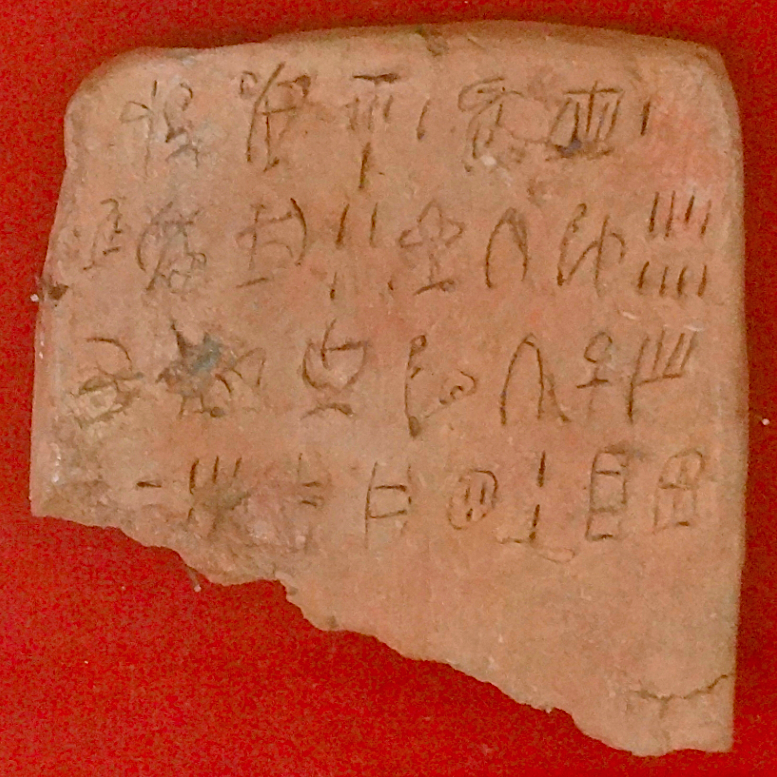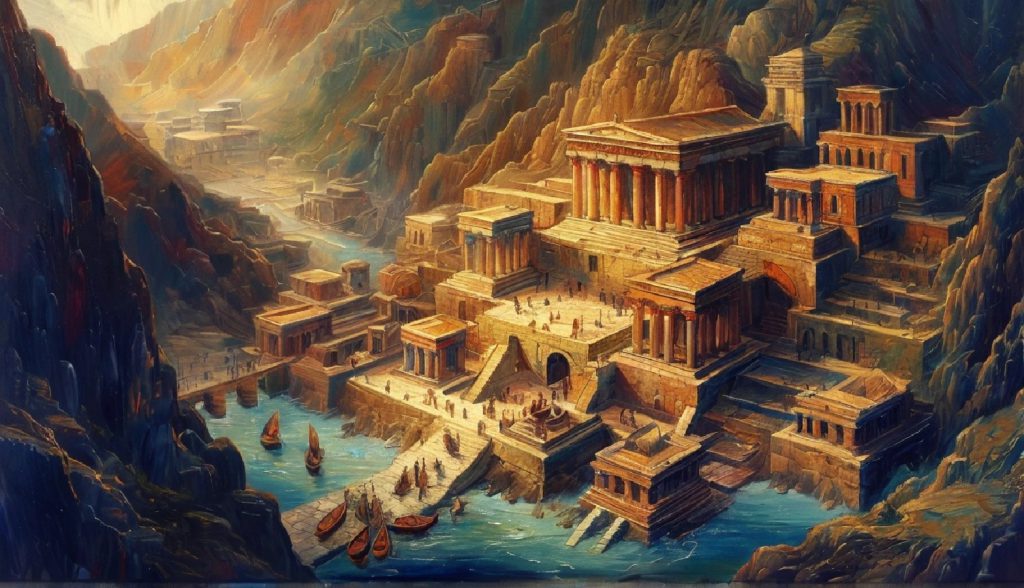Myth has it that the Earth goddess Gaia selected Keftiu, now known as Crete, as a haven for Zeus, shielding him from Kronos, his vengeful father. She understood that this island, shrouded in mystery and isolated, would be the ideal place for Rhea’s youngest to flourish. Over time, Crete was revealed as the home of one of history’s most enigmatic civilizations—the Keftiu (popularized as Minoans). We shed light on their secrets with every new archaeological discovery, offering insights into this ancient society’s profound and enduring influence.
Ancient Texts and New Interpretations
Dr. Joseph MacGillivray of the British School at Athens has conducted intriguing research in his recent paper, “The Quiet Decipherment of Linear A”. This work delves into the origins of Zeus and the efforts to decode Linear A, an undeciphered script associated with the Keftiu. MacGillivray highlights Sir Arthur Evans’ discovery of a stone vessel fragment from the Dikteon Cave, bearing Linear A inscriptions. While Evans spent much of his life attempting to unlock its meaning, MacGillivray suggests that Hubert La Marle, a self-taught linguist, may have already succeeded in decoding this ancient script.

Linear A, used between 1800 and 1450 BCE, remains one of four undeciphered writing systems tied to the Keftiu (Minoan) civilization. While Linear B, associated with Mycenaean Greece, was successfully decoded by architect Michael Ventris in 1956, Cretan hieroglyphics and Cypro-Minoan scripts remain a mystery.
According to MacGillivray, La Marle’s controversial studies propose that Linear A could be a prototype of an Indo-Iranian language. This theory would challenge long-held assumptions about European-centered interpretations. Though much work remains to be done, it would seem that MacGillivray’s assertions might bear fruit. There are, however, far too many puzzle pieces yet to be discovered in the layer upon layer of human existence on this island. La Marle’s translation of a Linear A inscription from a Psychro vessel offers compelling evidence. The text reads:
I have been ritually purified in olive oil and sacred water for my lady Assara.
This repeated phrase, almost like a mantra, provides insights into Keftiu/Minoan spiritual practices. Such discoveries raise questions about the role of Knossos, which was traditionally viewed as a palace but perhaps more accurately interpreted as a temple complex.
Evans’ Legacy: Reconstruction and Criticism
Sir Arthur Evans’ work at Knossos has transformed our understanding of this ancient civilization. However, scholars like MacGillivray have criticized Evans’ Eurocentric lens, which emphasized these ancient people’s “European” aspects. Evans often framed Knossos’ architecture and society as distinctly European. The great archaeologist overlooked the possible connections to Eastern cultures. Ilse Schoep’s research underscores this, stating:
Evans went to great lengths to emphasize the European character of Cretan Bronze Age society.
This perspective may have limited investigations into non-European influences, such as those proposed by La Marle. Further study into Neolithic finds in Crete’s sites from Xerokampos, around Cape Goudouras, to the port at Makry Galos will help fill in the many missing gaps. (See Final Neolithic Crete and the Southeast Aegean: Supplement 2 By Krzystof Nowicki) It seems logical for archaeologists to refocus on the interplay and connectedness of Late Neolithic (LN1 for instance) constructs with those of Early Minoan (EM1). Other finds, such as those at Pseira Island, off the shore of Kavousi Beach (feature image) show developmental stages from the Neolithic age to proof of Keftiu cult practice. In fact, the entire Island of Crete is peppered with developmental evidence that could (should) give a greater understanding of who the Keftiu were, and where they came from.

Moving forward, MacGillivray and La Marle direct attention eastward, suggesting links between Keftiu (Evans’ Minoan) culture and the Zagros Mountains of Iran. Genealogical evidence and the concept of a Keftiu supreme deity named Itar, a lightning god paralleling Zeus, reveal potential ties to Indian and Zoroastrian mythologies. These findings contradict traditional notions of Keftiu’s origins and hint at broader cultural exchanges.
The Big Picture
The Keftiu civilization, with its palatial ruins, intricate frescoes, and undeciphered scripts, is a gigantic historical puzzle with more key pieces that are missing than those that have been discovered. The possibility of these peoples’ ancient scripts having its roots in Indo-Iranian systems shifts focus beyond Europe, opening new opportunities for understanding this ancient society. Zakros, Palaikastro, a rumored lost city of Erythraea near Cape Goudouras, and even distant regions like the Zagros Mountain region in Iran are now targeted for exploration. By unravelling their story, the Keftiu may offer revelations about the shared origins of human culture.

Continuing to study Crete’s past reveals profound connections and challenges existing narratives. The secrets of the Keftiu may well reshape how the world views ancient civilizations, their connectedness, and our current geopolitical/cultural bindings. It seems that efforts at mapping the transitional periods, for instance, LN1 to EM1, could provide insight into early Keftiu development, if not the origins of the highly developed civilization that so many are still puzzled by. Was there some migratory influence? Or, did the Stone Age islanders evolve in relative isolation? A discovery of pre-historic artefacts at some of the sites Nowicki presented, may offer fascinating clues.
Highlights
- Location: Keftiu (modern Crete) served as Zeus’ sanctuary, giving rise to an extraordinary culture.
- Linear A: An undeciphered script possibly connected to Indo-Iranian language roots.
- Translation: A Psychro vessel inscription suggests Keftiu religious practices.
- Criticism: Scholars challenge Eurocentric interpretations stemming from Arthur Evans’ legacy.
- Eastern Connections: Possible cultural ties to the Zagros Mountains and Indian mythology.
- Future Discoveries: Much can be gleaned from linking Neolithic finds and the EM period

